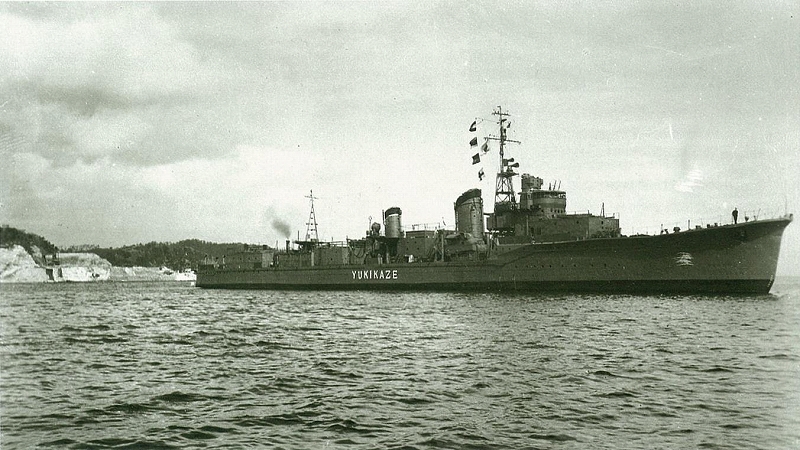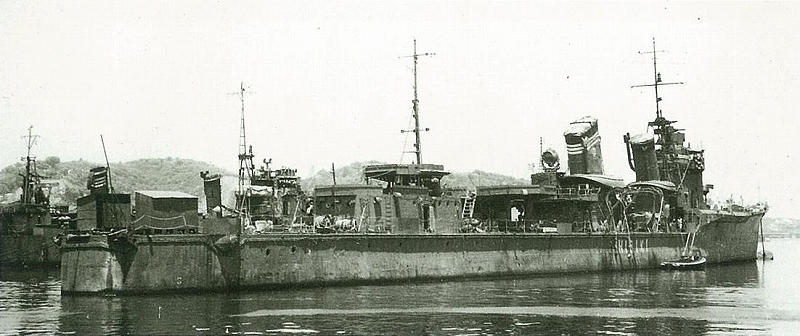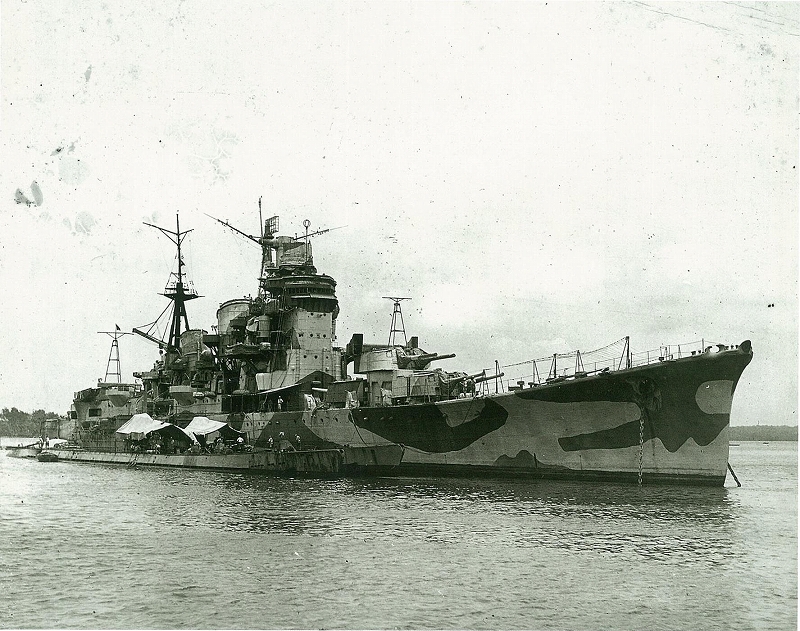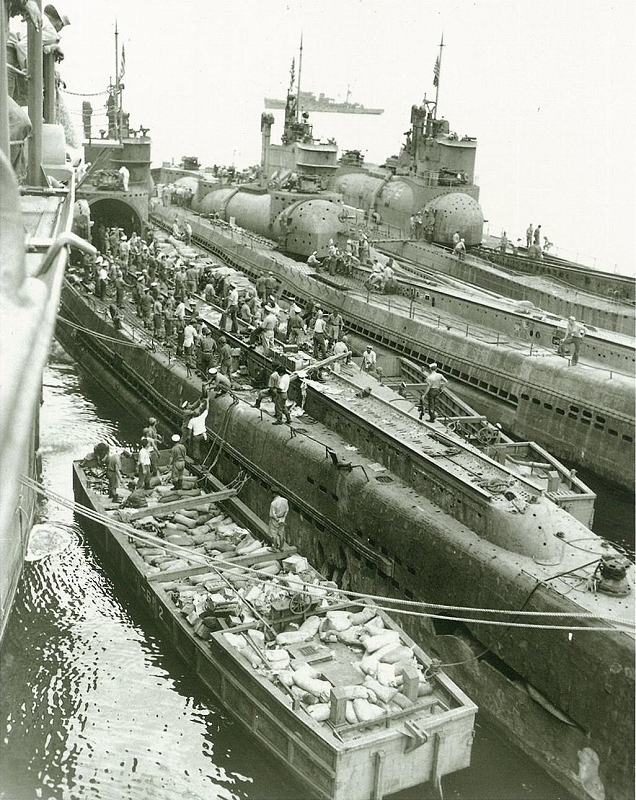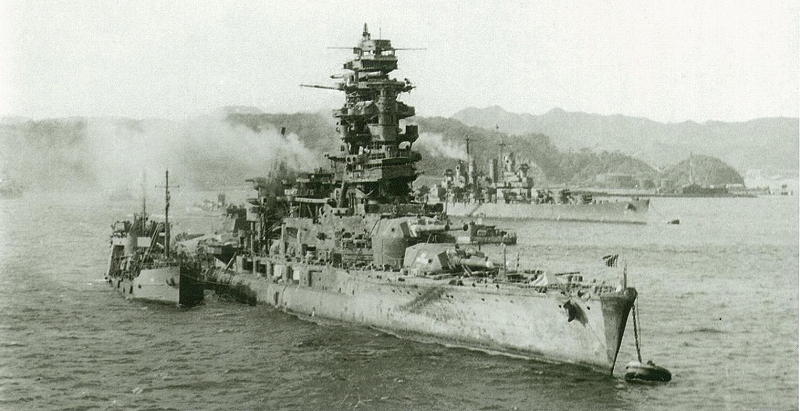
Top Page > Search by topic within "Japanese Soldier Repatriation after World War Two, as Seen in Archival Records" > Column No.2 [ World War Two Battleship Reparations: Battleships Returning to the Ocean ]
Column No.2 [ World War Two Battleship Reparations: Battleships Returning to the Ocean ]
After Japanese isolationist policies ended in the mid-nineteenth century, the procurement of naval power was seen as critical to the island nation.
At the start of the Pacific War, the Japanese Navy had one of the world’s largest fleets of battleships, but few made it to the war’s end.
The ships that survived war were transferred, as reparations, to the Allied forces.
This article will examine the histories of five well-known warships: the destroyer Yukikaze, the destroyer Hibiki, the heavy cruiser Myoko, the battleship Nagato, and the submarine I-400.
In our discussion we will focus particularly on post-war transfers among the Republic of China, the Soviet Union, the British Commonwealth, and the United States of America.
1. Destroyer "Yukikaze"
Yukikaze was one of very few destroyers to remain afloat at the end of World War Two.
It participated in many battles, including those in Java Sea, Leyte Gulf, and Bounomisaki.
After the war, Yukikaze’s deck turrets were replaced with temporary housing, and the vessel transported more than 13,000 people to Japan on fifteen trips.
The picture above shows Yukikaze in February or March of 1947.
That same year, on July 6, the ship was transferred to Chinese control.
Yukikaze was then renamed Danyang and remilitarized until its retirement on December 16, 1965.
It was fully decommissioned on November 16, 1966 and disassembled on December 31, 1971.
Only the steering wheel of Yukikaze was return to Japan as a war memory, now on display in Naval History Museum of the 1st Service School of JMSDF in Edajima city,Hiroshima Prefecture .
There are a number of World War Two era documents on Yukikaza in the JACAR database.
For example, if you read the document “Shifting preparation special work performance progress outline and remarks”, Reference code: C08011234100, you can see how the Yukikaze had undergone a mechanical and operational check for redeployment—to transport soldiers, sailors and civilians—from the 14th to the 19th of March, 1947.
2. Destroyer "Hibiki"
With some repairs, the Japanese naval destroyer Hibiki managed to survive many fights, including battles in Batavia, and it withdrew from operations in Kiska.
Though Hibiki was going to participate in what was planned as a hopeless, final battle in Okinawa, its travels were disrupted by a sea mine off the coast of Suounada Himejima Toudai.
It returned to Kure Port and performed as an air defense battery.
After the war Hibiki was disarmed in Maizuru Port and it worked as a shipping transport.
It brought people to Japan over fourteen trips.
The picture above shows Yukikaze on May 19, 1947, in Yokosuka. It was completing a shipment of soldiers, sailors, and civilians.
July 6th of the same year, the ship was transferred to the Allied powers. You can see that the Hibiki’s deck became space for temporary housing.
On July 5, 1947, Hibiki was transferred to the Soviet Union for reparations.
Two days later it was incorporated into the Soviet Union’s 5th Pacific Fleet.
Hibiki was then renamed as Верный and rearmed on the 20th of July.
About a year later, on the 22nd of July 1948, it was disarmed and began work as a training ship with the name Декабрис.
A few years later, on February 20, 1953 the aged Декабрис was retired, disassembled, and submerged into the ocean off the coast of Vladivostok.
In JACAR’s collection of records, you can see materials concerning Hibiki.
For example, there is the document titled “Shifting preparation special work performance progress outline and remarks”, Reference code: C08011234100. This document shows that after completing trips to repatriate Japanese, Hibiki was serviced with mechanical and operational checks to relaunch it from Kure Port between the 14th and 19th of March, 1947.
3. Heavy Class Cruiser "Myoko"
Myoko is a heavy class cruiser that was owed by the Imperial Japanese Navy.
Myoko participated in many large operations, including the Battle of the Java Sea, the Battle of Coral Sea, the Battle of Empress Augusta Bay, the Battle of the Philippine Sea, and the Battle of Leyte Gulf.
Myoko was damaged in the Battle of Leyte Gulf, and towed to Singapore for repairs after the war.
Myoko was able to provide accommodations as well as electricity generation for other ships and also communications equipment.
The picture above shows Myoko in September or October 1945, and it was taken in Seletar Port, Singapore.
After arriving, Myoko was transferred to British forces and taken to the Malacca Strait, where it was disassembled on July 8, 1946.
Myoko wasn’t engaged in transportation of soldiers, sailors or civilian workers.
And there are not many historical records concerning Myoko after World War Two, so we can infer that it was probably disassembled soon after the war.
From JACAR records there is the document “Number by jurisdiction As of July 1”, Reference code: C14061157400. This record shows that of the 830 people aboard Myoko as of July 1, 1946, 653 were being repatriated.
4. I-400 Submarine
The I-400 submarine is one of the biggest submarines to have been built by the Imperial Japanese Navy for attacking the U.S. mainland.
It was completed on December 30, 1944. After preparation for disembarkation, it was sent to war from Ominato Port to Ulithi Atoll on July 23,1945.
This particular I-400 submarine pictured above was in Southeast Asia at the end of the war and it was captured on August 29, 1945 by Blue, a U.S. Navy destroyer.
It was sent the next day to Yokosuka Port.
The picture of the I-400 submarine may have been taken on August 31 or the following day at Yokosuka Port.
The picture shows the US naval submarine USS Proteus on the left and in the middle is a wooden cargo ship next to the I-400 submarine, with sailors working on it.
The picture in the middle shows I-400 Submarine sailors working on.
You can also see part of the I-14 submarine and the I-401 submarine.
On September 15, 1946 the I-400 submarine left Sasebo Port for the U.S as part of Japanese reparations. After a technical investigation, it was disassembled in the sea near Hawaii on June 4, 1946.
In the survey conducted by Hawai University in August,2013, the I-400 submarine was found and also NHK put it on the the air on May 6, 2015.
There are not many historical records in general or in the JACAR database concerning the I-400 submarine, so it can be deduced that it had entered the Pacific War not long before its end.
It was in a list of records, however, tallying remaining arsenal after the war.
This survival came as a surprise to people in Japan and announcements of the ship’s safety were broadcast widely on the August 7, 2015. Initially it was assumed that the I-400 was the I-402, but that was not the case.
5. Battleship "Nagato"
Even before the Pacific War, the Imperial Japanese Navy’s Battleship Nagato had been recognized internationally as the most advanced of Japan’s fleet.
The Battleship Nagato participated in the Battle of the Philippine Sea, including Operation Sho1-go and the Battle of Leyte Gulf.
After the Battle of Bounomisaki Gulf, efforts to conserve fuel led the Battleship Nagato to be converted into an anti-aircraft platform for the defense of coastal cities.
Once the Pacific War ended, on August 30, 1945, Nagato was requisitioned with damage.
The picture above was taken at Yokosuka Port, where Nagato was given a mechanical investigation and disarmed.
It was brought to Bikini Atoll, where it was sunken in the nuclear weapons test “Operation Crossroads”.
There are many historical records concerning the internationally well-known ship Nagato and the JACAR database holds its last detailed engagement report of the Imperial Japanese Navy’s Distinguished Services Investigation Department.
This last detailed engagement report on the Battleship Nagato, of August 10, 1945, shows that the ship was enrolled as a special patrol boat in the Imperial Japanese Navy.
[ Bibliography ]
- 斉藤一好 『一海軍士官の太平洋戦争 等身大で語る戦争の真実』高文研, 2001年。
- 雑誌「丸」編集部『写真 太平洋戦争 第10巻』光人社, 1995年。
- 雑誌「丸」編集部『写真 日本の軍艦 第12巻 潜水艦』光人社, 1990年。
- 雑誌「丸」編集部『ハンディ判日本海軍艦艇写真集 17 駆逐艦 春雨型・白露型・朝潮型・陽炎型・夕雲型・島風』光人社, 1997年。
- 田村俊夫「特型の生き残り2艦の最後」『歴史群像 太平洋戦史シリーズ70 完全版 特型駆逐艦』学習研究社, 2010年。
- 豊田穣『雪風ハ沈マズ 強運駆逐艦栄光の生涯』光人社NF文庫新装版, 2004年。
- ひびき会編『不沈艦 響の栄光』 ひびき会, 1978年。
- 福井静夫『写真日本海軍全艦艇史』ベストセラーズ, 1994年。
- 福井静夫『終戦と帝国艦艇 わが海軍の終焉と艦艇の帰趨』出版共同社, 1961年。
- 宮川正『憤怒をこめて絶望の海を渡れ "不死鳥"の異名をとった駆逐艦「響」激闘一代記』
- JACAR Ref.C08011234100, Specially stored warships and boats file since October 1946 2/2 General Affairs Department, Yokosuka District Demobilization Office ((1)-delivery list 226) (The National Institute for Defense Studies, Ministry of Defense)
- JACAR Ref.C08011264600, June 1947 Warships and boats delivery file Kure District Demobilization Office ((1)-delivery list 243) (The National Institute for Defense Studies, Ministry of Defense)
- JACAR Ref.C08011352500 As of October 5, 1945 Submarine delivery list I-go (No. 402, No. 53, No. 58) ((1)-delivery list 370) (The National Institute for Defense Studies, Ministry of Defense)
- JACAR Ref.C12070511000, Detailed engagement report from May 1 to June 30, 1945, Warship Nagato(The National Institute for Defense Studies, Ministry of Defense)
- JACAR Ref.C08030566100, Detailed engagement report from May 1 to June 30, 1945, Warship Nagato (2) (The National Institute for Defense Studies, Ministry of Defense)
![Search by topic within "Japanese Soldier Repatriation after World War Two, as Seen in Archival Records" [JACAR Glossary]](../../images/logo.png)
